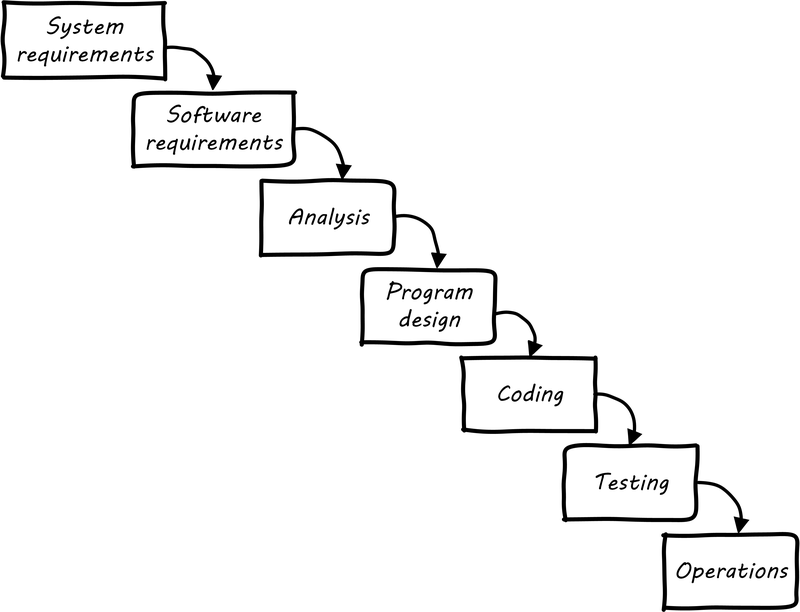
No coding takes place during this phase, but the team establishes specs such as programming language or hardware requirements. Using the established requirements, your team designs the system. By the end of this phase, the project requirements should be clear, and you should have a requirements document that has been distributed to your team. You can gather this information in a variety of ways, from interviews to questionnaires to interactive brainstorming. In this stage, you should gather comprehensive information about what this project requires. The specific waterfall phases vary somewhat from source to source, but they generally include: 1. Documentation should take place throughout every phase of the process, ensuring that everyone involved is on the same page despite the sequential progression of the project. It will also provide project milestones that will make it simple to determine progress.Ĭonsequently, thorough documentation is a priority in traditional waterfall project management methodology. When followed properly, this document makes expectations clear. Team members will refer to the documentation you provide throughout the process. You may also want to try adding swimlanes to show which tasks go to which team member. We recommend outlining this information as a flowchart, as shown below, so your team can quickly understand and reference requirements as needed.

Each team member should also understand what their role will be in the project and what that role entails.Īll of this information must be thoroughly documented and then distributed to everyone on the project. A project’s requirements must be clear upfront, and everyone involved in a project must be well aware of those requirements. There’s no good way to un-pour a concrete foundation.Īs you can imagine, proper planning is a must in the waterfall system. Likewise, it’s impossible to revisit a phase. You can’t put up drywall if you haven’t framed a house. In these fields, project phases must happen sequentially. Waterfall project management has its roots in non-software industries like manufacturing and construction, where the system arose out of necessity. If waterfall methodology sounds strict, that’s because the system’s history demanded it. The only way to revisit a phase is to start over at phase one. No phase begins until the prior phase is complete, and each phase’s completion is terminal-waterfall management does not allow you to return to a previous phase. Simply put, traditional waterfall project management is a sequential, linear process of project management.

What is the waterfall project management methodology? Amongst all these terms, you may have heard about the waterfall project management methodology, even if you’ve never used it.Ĭurious as to whether this approach would be a good fit for your project management needs? In this guide, learn how the waterfall methodology uses a sequential process to simplify project management and how you might implement aspects of this methodology in your own work. If you pick an Ace: If an Ace is drawn, everyone must drink.If you work in project management, you have probably heard a number of strange terms thrown around as you try to decide what approach will work best for your team: critical path, scrum, PMBOK, Six Sigma, etc.If you pick a King: The player who picks this card can create a new rule in the game.The first player to not answer must drink. That person then asks another player a question. If you pick a Queen: The player who picks this card must ask another player a question.The last person to put his or her thumb down must drink. If you pick a Jack: The player who picks this card must put their thumb on the table.The other players must say a word that fits in the category. If you pick a 10: The player who picks the card must choose a category.The other players must say a word that rhymes. If you pick a 9: The player must choose a word.The two players must drink at the same time for the remainder of the game. If you pick an 8: The player who picks the card must choose a mate.If you pick a 7: All players must reach for the sky.If you pick a 6: All the guys in the game must drink.This continues around the table until some messes up. The next person must repeat the move and add to it. If you pick a 5: The player who picks the card must pick a dance move and perform it.If you pick a 4: All the girls in the game must drink.If you pick a 3: The player who picks the card must take 3 sips.If you pick a 2: The player can make another player take two sips.Each person then draws a card from the circle and must act out each card based on the rules.

Make sure that all the cards are touching. The cards must then be spread into a circle around the liquor bottle.

The cards are shuffled and the liquor is placed in the center of the table.


 0 kommentar(er)
0 kommentar(er)
